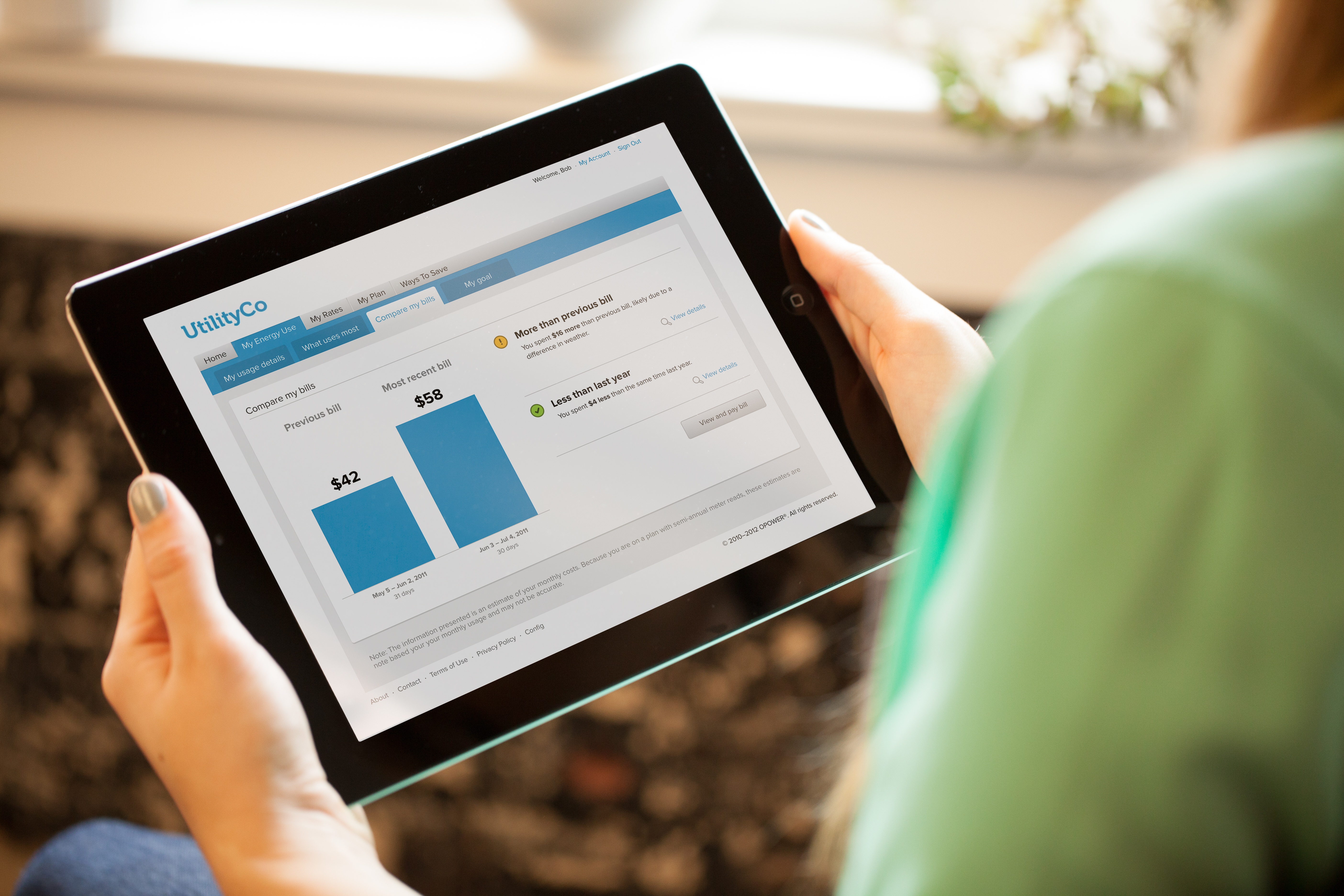This post is one in a series featuring the complete slate of advanced energy technologies outlined in the report This Is Advanced Energy.

Photo courtesy of Opower.
Behavioral energy efficiency (BEE) employs messaging grounded in behavioral science to produce simple, actionable messages that are relevant to customers and motivate them to save energy. The average utility customer spends just nine minutes per year interacting with their utility or electricity provider. When they do, they are likely to have one basic question: How can I save money? BEE answers this question with communications delivered through multiple channels – e.g., web, mobile, mail – to help customers get engaged and focused on reducing energy consumption and saving money. These messages include information such as how the customer’s energy use compares to that of similar homes in the same neighborhood, as well as personalized energy efficiency tips, providing customers with voluntary ways to save. BEE programs consistently produce savings of 1.5% to 2.5% per household. For context, every 1% reduction in residential electricity use nationally is roughly equivalent to the electricity used by 1.3 million homes, or nearly $1.7 billion annually.
Behavioral energy efficiency programs are deployed by utilities or third parties acting as contracted agents of the utility. For example, Opower works with 95 utility partners in 35 states and 9 countries, including 28 of the 50 largest U.S. utilities. Opower’s programs reach over 50 million households and businesses and have saved 8 terawatthours of energy – the equivalent of taking all the homes in New Mexico off the grid for a year. Because Opower’s BEE programs are administered as randomly controlled trials – much like drug trials – utilities can measure and verify every kilowatt-hour saved. Arizona’s largest investor-owned utility, Arizona Public Service (APS), achieved 41 GWh of total savings from 2011 to 2013 through an Opower BEE program. One important outcome was that households with limited income achieved above-average savings. Historically, low- and moderate-income customers have been harder to reach with energy efficiency programs, even though they stand to benefit the most.
The cost effectiveness of BEE makes it an attractive option for utilities and their customers. In a recent study, researchers at MIT and Harvard found that the cost to the utility is approximately 2.5 cents per kWh saved, which is far less than the cost of acquiring or generating electricity from a new power plant. For customers, BEE delivers free energy savings via actionable information about energy use. Worldwide, Opower’s programs have saved customers over $1 billion in utility bill savings. McKinsey & Company recently estimated that BEE, if deployed to all households in the United States for which it is cost effective, could save almost 19 TWh of energy per year, which translates to $2.3 billion in avoided annual energy spending. BEE also provides system-wide benefits, such as enabling utilities to defer or avoid costly capital investments in new generating capacity or transmission and distribution infrastructure.
